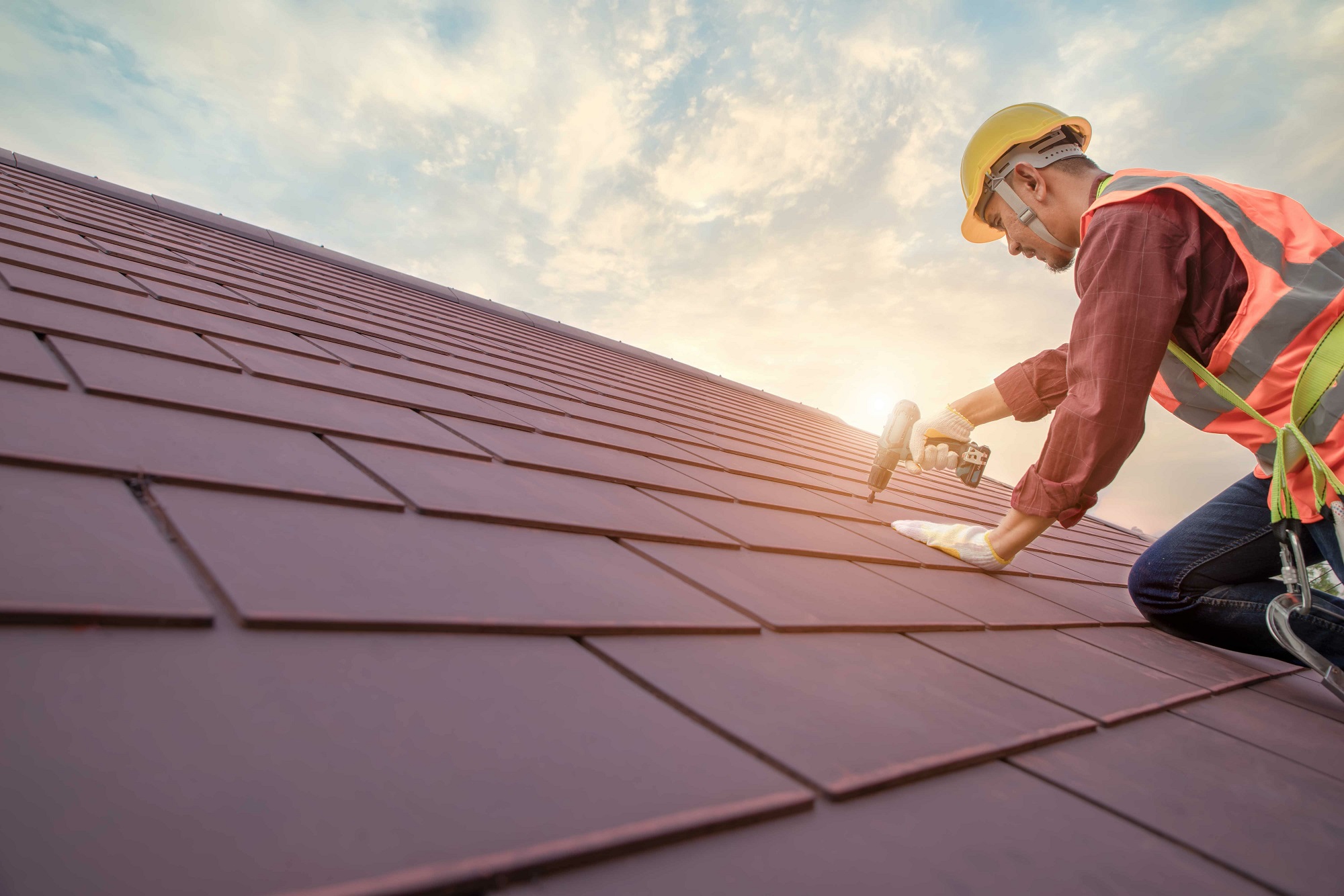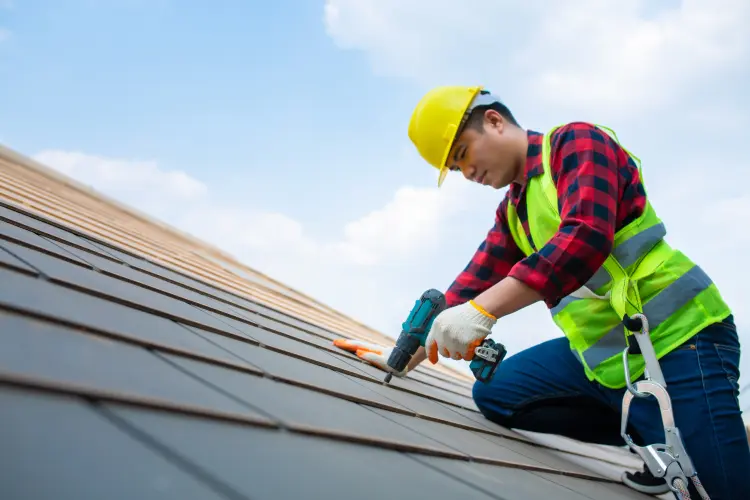A Comprehensive Overview to Effective Roof Covering Flat Roof Covering Installment
The complexities of level roofing installation need a precise approach, starting with an extensive understanding of different flat roof covering types and the essential materials needed for ideal efficiency. A successful installation pivots not just on the choice of products yet also on the prep work and execution of each step entailed in the procedure.
Comprehending Flat Roofing Types
When considering level roofs, it is important to recognize the different kinds readily available, as each deals distinctive advantages and negative aspects tailored to specific requirements. The most usual kinds of flat roofing systems consist of Built-Up Roof (BUR), Changed Asphalt, and Single-Ply membranes.
Built-Up Roofing is composed of several layers of asphalt and gravel, supplying superb longevity and climate resistance. It is especially beneficial in areas prone to serious climate condition yet might call for more upkeep as a result of its intricate construction.
Modified Bitumen is a popular option for its convenience of setup and flexibility. It typically utilizes a torch-applied or self-adhesive approach, which can be beneficial for fast repair services and long-lasting efficiency. Its life expectancy can be shorter compared to BUR.
Single-Ply membrane layers, including Thermoplastic Olefin (TPO) and Ethylene Propylene Diene Monomer (EPDM), are recognized for their lightweight nature and energy efficiency. These products are commonly liked for industrial buildings as a result of their cost-effectiveness and ease of installation (Cleveland Roofing Specialists). However, they may not offer the exact same degree of insulation as various other alternatives.
Each roofing type calls for careful consideration based upon environment, spending plan, and details job needs.
Important Materials for Apartment Roofing
A selection of crucial products are crucial for the effective installment of level roof. The selection of materials directly impacts resilience, performance, and general efficiency.
Among the key materials is the roof membrane layer, which can be created from different substances such as polycarbonate polyolefin (TPO), ethylene propylene diene monomer (EPDM), or PVC. Each type provides one-of-a-kind advantages, including UV resistance and adaptability, which are vital for prolonged performance.
Along with the membrane layer, insulation materials play a significant role in energy performance. Inflexible foam boards or polyisocyanurate insulation are popular options, as they give outstanding thermal resistance and moisture administration.
Additionally, roof covering adhesives and sealants are essential for ensuring a leak-proof installment. These items must be compatible with the picked membrane to stop wear and tear with time.
Planning For Installment
Appropriate prep work is crucial for a successful level roof covering installment, as it lays the groundwork for a efficient and long lasting roof covering system. Begin by performing a complete examination of the existing roof framework. Seek indicators of damages, including leaks, rot, or insufficient drain, which can endanger the brand-new roof. Ensure that the underlying products are sound and link can sustain the weight of the new roof covering elements.
Next, gather all essential tools and materials, ensuring that they fulfill market requirements. This consists of water-proof membranes, insulation, flashing, and bolts. Acquaint on your own with the maker's specs, as adherence to these guidelines is important for guarantee functions.
Additionally, ensure that the workspace is clear of debris and blockages to help with reliable and risk-free installation. Take into consideration climate condition; avoid setup throughout hefty rain or severe temperatures, which can influence material efficiency. Notify any type of residents of the structure about the future job to make certain security and decrease interruptions. By taking these primary steps, you can boost the possibility of a successful flat roofing installment that satisfies both architectural and visual demands.
Step-by-Step Installment Refine
With the foundation developed through extensive preparation, the next stage involves performing the flat roof covering installment methodically. This action is crucial for maintaining the roof covering's honesty over time.
Adhering to the vapor barrier setup, put down insulation boards, guaranteeing they fit securely together to reduce thermal bridging. Protect the insulation with appropriate fasteners based upon the roof covering type and local building regulations. When the insulation is in area, it's time to apply the roof covering membrane. Relying on the selected material-- such as TPO, EPDM, or customized bitumen-- mount the membrane layer according to the maker's specs.
Make sure proper overlap at joints and sides to develop a watertight seal. Use adhesives, mechanical fasteners, or heat welding as needed. Finally, set up flashing around boundaries, vents, and any kind of roofing system infiltrations to enhance waterproofing. After installation, carry out a thorough inspection to determine any kind of potential problems prior to wrapping up the project, making why not check here sure a robust and dependable flat roof covering system.
Upkeep Tips for Longevity
Regular maintenance is necessary to ensure the long life and efficiency of a level roof. Among the key tasks is to carry out regular assessments at the very least two times a year, preferably in spring and fall. During these inspections, look for indications of wear, such as sores, fractures, or pooling water, which can show underlying issues.

Guaranteeing appropriate water drainage is vital to stop water accumulation. Inspect and clear seamless gutters, downspouts, and scuppers to guarantee unobstructed water flow. Furthermore, evaluate seals around vents, skylights, and other penetrations for any type of indications of degeneration, using caulk or sealant as needed to maintain a leak-proof obstacle.
Finally, take into consideration specialist upkeep solutions every couple of years for comprehensive maintenances. By adhering to these upkeep pointers, you can considerably prolong the life of your flat roofing, ensuring it remains a reliable shield versus the components.
Verdict
Effective level roofing system installment demands an organized technique incorporating thorough assessments, material choice, and thorough preparation. Sticking to the described actions throughout the setup procedure makes certain the appropriate application of roof covering membranes and insulation while improving waterproofing via efficient blinking installation.
The ins and outs of level roofing installation demand a thorough method, starting with an extensive understanding of numerous flat roofing system kinds and the important products required for optimum performance.Appropriate prep work is crucial Recommended Reading for a successful flat roofing installment, as it lays the foundation for a reliable and resilient roof system. After installment, perform an extensive inspection to determine any kind of possible concerns prior to concluding the task, ensuring a trustworthy and durable flat roof system.
